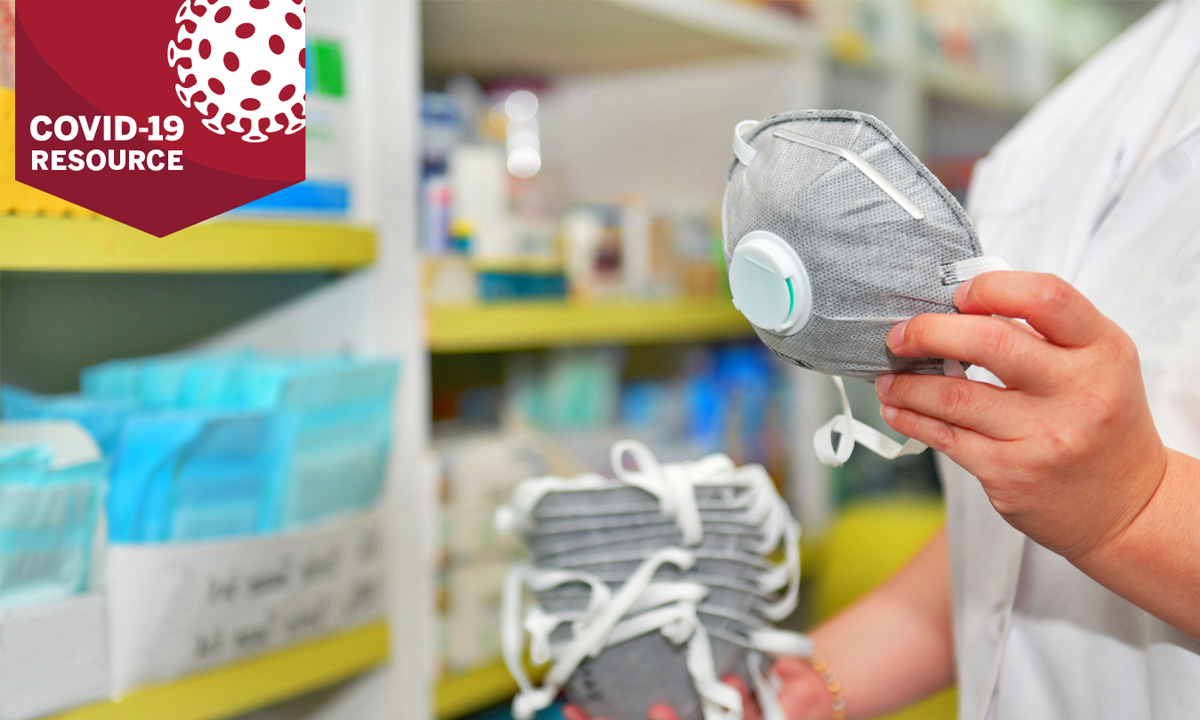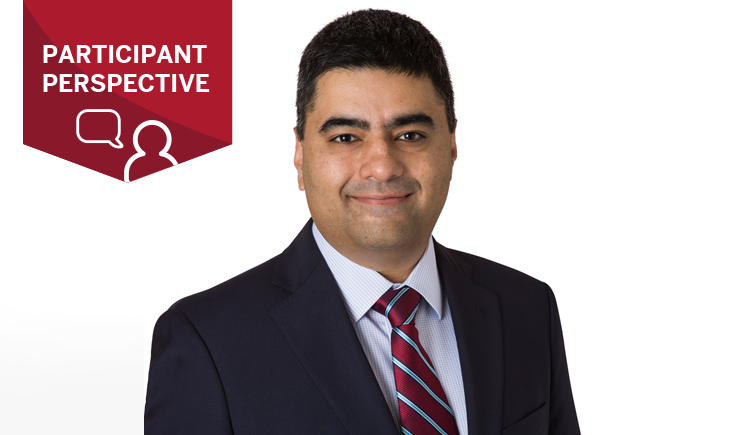
Information regarding COVID-19 has rapidly evolved. The content in this article provides a historical snapshot of events surrounding the date of posting.
During a discussion on the challenges of ensuring staff and patient safety during COVID-19, Ajay K. Singh, MBBS, FRCP(UK), MBA, Wilton Levine, MD, Chuck Morris, MD, MPH, and Richard S. Gitomer, MD talked about constraints on PPE, the work-life balance for staff, deferring non-essential surgeries and the cohorting of operating rooms and procedural areas. The following article is an excerpt from this discussion recorded on March 25, 2020 that has been condensed and edited for clarity and accuracy.
How are you managing the work-life balance for employees who are facing the challenges of a stay-at-home scenario with schools shut or with their spouses or partners being laid off? And, what advice would you give health systems that are behind in terms of timing where we are in Boston or in New York?
Dr. Morris: So my terse advice is, think about it. I remember having a conversation about four weeks ago with some colleagues on the West Coast just as this was emerging in California and Seattle. And their early advice was, think about the PPE supply chain and think about your workforce. Because schools will close. As you point out, there will be very real issues in terms of how to balance childcare.
We’ve actually pivoted to having an enormous number of our staff now work at home. That’s been part of a social distancing campaign that our whole health system has organized and pushed. Prior to COVID, if somebody wanted to work at home, it was always understood that they wouldn’t be doing childcare at the same time.
We’ve had to recognize that this is a brave new world, and we can’t have those kinds of constraints. So we’ve had to be much more inclusive and accepting that this is a different way to do work. If people are at home and there are some care needs with dependents, those can be managed in parallel at the same time.
Our health system has done a great job both helping to make arrangements with private organizations for long-term childcare options as well as helping to subsidize some short-term options. We’ve had some great partners in human resources helping us to think through potential solutions we could offer to our workforce. But, these are ongoing challenges we wrestle with for staff who are out for either medical reasons or issues of childcare.
Dr. Levine, you have to make sure there is sufficient workforce for the operating room. Have you found this work-life balance a challenge? And as part of the command structure across the health system, have you seen this posing a challenge?
Dr. Levine: In each clinical domain, there are different sets of challenges. As an anesthesiologist, I can’t do clinical work from home. I need to be in the operating room. My office assistant can work remotely. We have a pre-procedure clinic that does phone screens and evaluations of patients, and we have moved a tremendous amount of our ambulatory work to be remote.
I was having a conversation with one of our busiest general surgeons yesterday. He is seeing all of his patients through telemedicine. He can’t do a physical exam, but he can do most of what he needs to do remotely. It’s a different world than it was two weeks ago, and even one week ago, in that regard. And that’s in part because a lot of the regulations around what platforms can be used and how we can bill for these services have changed in the past 10 days, which has allowed this to become easier.
On the operating room side, we are looking at our staff to not only do necessary surgical care but also be prepared to upstaff for surge ICUs that we see coming in the near future. We are making plans to convert our PACUs into surge ICUs. Now, we are lucky that we have more ICU beds on our main campus than many health systems, as well as the ventilators to support that. At the same time, we are making plans to double the number of ICU beds we have. And with that, we need staffing, intensivists, other physicians, and nurses.
Effective a week ago, we began deferring all non-essential surgical and procedural care, and we’re keeping a log of every one of these patients so we can get them back on the schedule. We made strict criteria for who can come and under what criteria, and we have our surgical chiefs reviewing every new case that gets onto the schedule. The chief of surgery and I review the entire schedule every day to make sure we’ve got the right patients. This is not how our organization typically works, but it’s how it needs to be right now.
In our operating rooms—before COVID—we typically would do 160 surgical cases in our every day. We did about 35 yesterday, just in terms of what’s being deferred. We would do over 140 endoscopies a day. Yesterday, we did 14.
We are deferring everything we can and moving our staff into a couple of buckets. So, we have people ready to work. We have people on backup, so that as folks go off on furlough and healthcare workers get sick, we have a safe and protected, healthy workforce ready to come in. The patients are just going to keep coming, and we need to be prepared.
Dr. Gitomer, what is the situation in the primary care setting with respect to workforce and work-life balance?
Dr. Gitomer: We’re reconfiguring primary care, relying a lot on virtual care but also cohorting in-person visits to a fewer number of clinics so that most of our workforce will not be in a patient-facing situation. We’re being very cognizant about those that are in patient-facing situations. We rotate them on and rotate them off to preserve their ability to carry this through for as long as this pandemic is going to last.
We have an enormous number of people in our health system who are extraordinarily innovative, curious, and creative. Dr. Morris, what are you seeing done differently just in the last two weeks, whether it’s introduction of new technology or different practices?
Dr. Morris: The most remarkable thing is the speed with which we are implementing massive change across the health care system. I had a very similar reaction to Dr. Levine when I walked the halls the day we went with universal masking.
This is my 22nd year here at the Brigham. Never have I seen something pivot so quickly, so abruptly and so effectively. And the pace and rapidity of change are breathtaking. It has everything to do with the hospital incident command structure and the ability to centralize decision-making and get it rapidly out.
But, I think there’s some extraordinary ways in which we’ve seen care change. We’re seeing it in the inpatient setting. It started as a PPE conservation strategy to minimize staff exposure to patients with suspected or confirmed COVID, and now we’re using iPads and laptops to do virtual care with the patient right in the room. That is currently active and rolled out in our ICUs and the equivalent of our step-down or general medical surgical COVID floors.
We are looking at actual investment and rapid implementation of new design technology. I just got a chance to see a new testing booth, an idea that has been used in South Korea. But instead of having people dressed in PPE, you have a Plexiglas barrier with two arm holes through which gloved hands can swab and interact with a patient without the provider doffing and donning what is a precious resource right now. We have 10 prototypes ready to get out.
I’ve seen more 3D-printed face shields in the last 24 hours than I ever thought I would. We’ve got a new smartphone app, much like FastPass, to make it as easy as possible for employees to attest to their health upon entering the health care system. So, it’s not just the tech itself but the rapid implementation that is singularly remarkable to witness.
In Boston, there’s a hospital that’s being assigned to be a COVID-restricted hospital. Speak a little bit about that strategy in respect to a reorganization of care and then how care is delivered to patients.
Dr. Morris: I think operationally, that’s in many ways what we’ve done here at Brigham and Women’s Hospital. One of our buildings has the ability to essentially be turned into a negative pressure building, and we are consolidating as much COVID care as we can to that one building.
Given the nature of this virus as well as the current and likely projected community prevalence, it’s hard to imagine that we as a region could actually constrain and limit care to a single hospital or even a few hospitals. I think the reality that we are all preparing for is that we are going to be in the business of providing care to patients with COVID. And, I don’t think containing that to one facility is a reasonable strategy at this point.
Now certainly, within a health care system, we do want to look for ways within a given hospital on how we can cohort with patients as much as possible to minimize staff exposure and conserve PPE. But, in terms of a standalone entity and leaving other hospitals without any COVID patients, I don’t see that scenario playing out on a large scale here.
Has there been cohorting of operating rooms and procedural areas at Mass General Hospital?
Dr. Levine: We are cohorting on the inpatient wards and the ICUs. Surgical patients are in a single ICU, and we have COVID patients in a few of our ICUs, cohorting the known positives in the ICUs. We are cohorting what we’re calling our at-risk group on certain floors as we work them up and rule them out.
We have 60 operating rooms on our main campus. We have one floor where we do neuro and vascular and have all of the fixed technology for neuro, vascular, and endovascular surgery. We have one floor where we do orthopedics, a section where we do cardiac, and a section where we do general surgery and trauma. We can’t move our fixed technology, and we don’t want to do all of our positives in our neuro and vascular rooms. So, it’s very challenging to cohort.
We’ve had conversations about the concept of a negative pressure operating room. Operating rooms, by design, are positive pressure. The air comes in and goes out underneath the doors to push all of the infectious agents away from the patient. A negative pressure room sucks all of the air into the room to keep it out of the hallway. By design, by code, operating rooms are positive pressure.
Some institutions are looking to try to reverse their HVAC system on the operating rooms, which comes with other regulatory issues and infection control issues. It’s out there for discussion. So far, we have not been able, from an engineering standpoint, to convert our operating rooms to negative pressure operating rooms. It’s a tremendously complicated thing to do, and the monitoring and maintenance are challenging.
So far in our procedural space, we have not been able to cohort. We are looking to cohort in our pre- and post-procedure areas. We will have one area of our PACU where we cohort known positives and patients who are in our workup stage. If we could cohort in an operating room, we would. But given what our infrastructure looks like and how we are spread out from a supply, material, and technology standpoint, we’ve not been able to do that.
Dr. Morris: If I could just build on what Dr. Levine said. One operational reality is that a lot of the cohorting models assume that patients come in identified as COVID and that you can cohort and segregate upon entry to the hospital. But, the incubation period from infection to symptoms is somewhere between 2 and 14 days.
And so, we have had inpatients who developed fevers during their stay for a non-COVID illness. That fever prompts the immediate question of, could this be something else, such as an early presentation of COVID? And so, these populations are intertwined from the start.
What we’re really trying to focus on is that at any given moment in the hospital, we actually have a larger number of patients who are currently being ruled out for COVID. They developed a cough and a fever. Maybe that’s a small post-operative pneumonia or an aspiration or maybe it’s a declaration of a new viral pneumonia. We’re focused on immediate recognition of the symptoms, appropriate precautions, rapid testing and then discerning the population.
Dr. Gitomer, how are you dealing with cohorting in the primary care setting?
Dr. Gitomer: We’re in the process of limiting face-to-face visits to select clinics. We’ll have a respiratory illness clinic, where anybody with any respiratory symptoms will then be diverted. We have a couple of other sites for non-respiratory face-to-face visits.
The intent in the non-respiratory sites is that we would deal with people with acute conditions, as well as people with chronic conditions that need some face-to-face follow-up. Most of these visits will be preceded by a video visit or a telephone visit, and that would tee up the beginning of the visit. When the patient is then referred to one of these sites, there is a specific question: What in-person information needs to be collected so that the plan can then be completed?
And, just to give you an idea of numbers, right now we’re starting with one respiratory site for what is 16 primary care clinics, and then probably two non-respiratory clinics, with the rest all virtual care. Each clinic has accountability for their population of patients and everything on the visit that relates to them.
-
Featured Panelists
- Ajay K. Singh, MBBS, FRCP(UK), MBA, Senior Associate Dean for Postgraduate Medical Education, Nephrologist, Brigham and Women's Hospital.
- Wilton Levine, MD, Medical Director for Preoperative Services at Massachusetts General Hospital, where he also oversees the operating room system. Dr. Wilton is an Associate Professor at Harvard Medical School and an anesthesiologist at Massachusetts General Hospital.
- Chuck Morris, MD, MPH, Associate Chief Medical Officer and Vice President of Clinical Affairs at Brigham and Women’s Hospital in Boston. Dr. Morris is an internist who has practiced primary care for many years at the Brigham, where he is part of the hospital’s command structure.
- Richard S. Gitomer, MD, Vice Chair for Primary Care in the Department of Medicine at Brigham and Women’s Hospital. Dr. Gitomer is an internist who spent most of his professional life at Emory before moving to Boston to oversee primary care at Brigham and Women’s Hospital.


